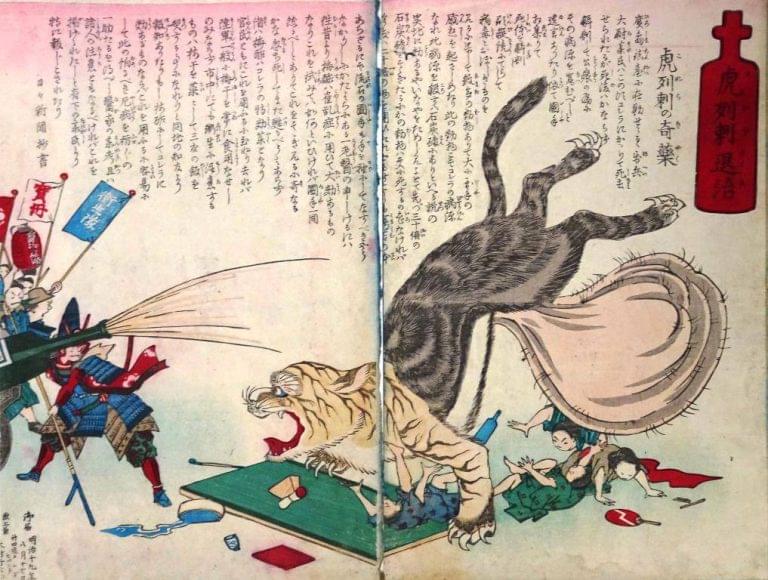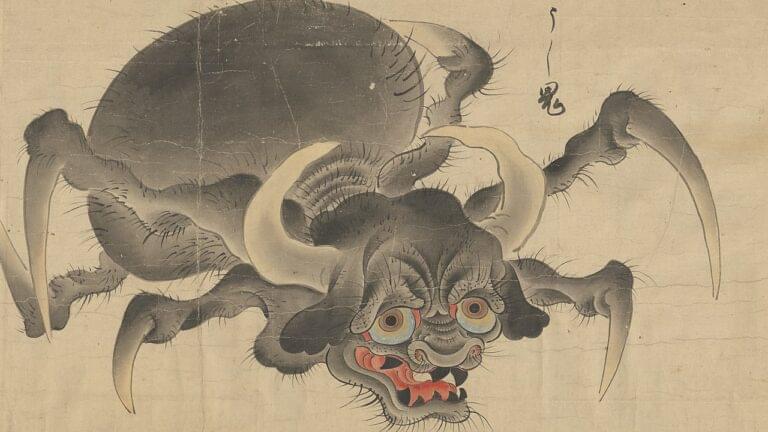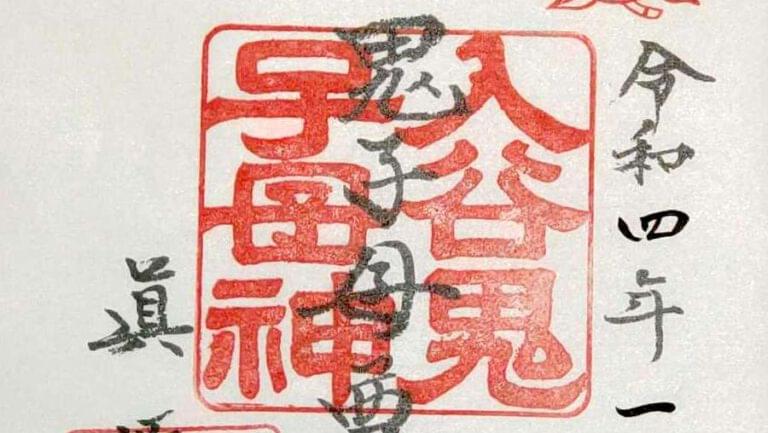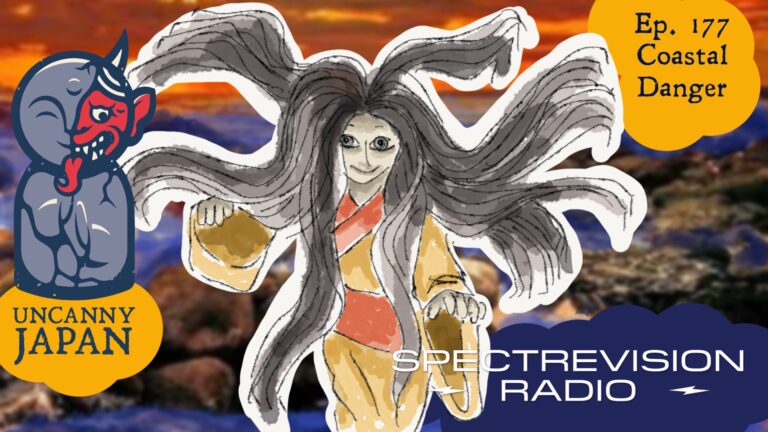Uncannytober 2022 Illustrations
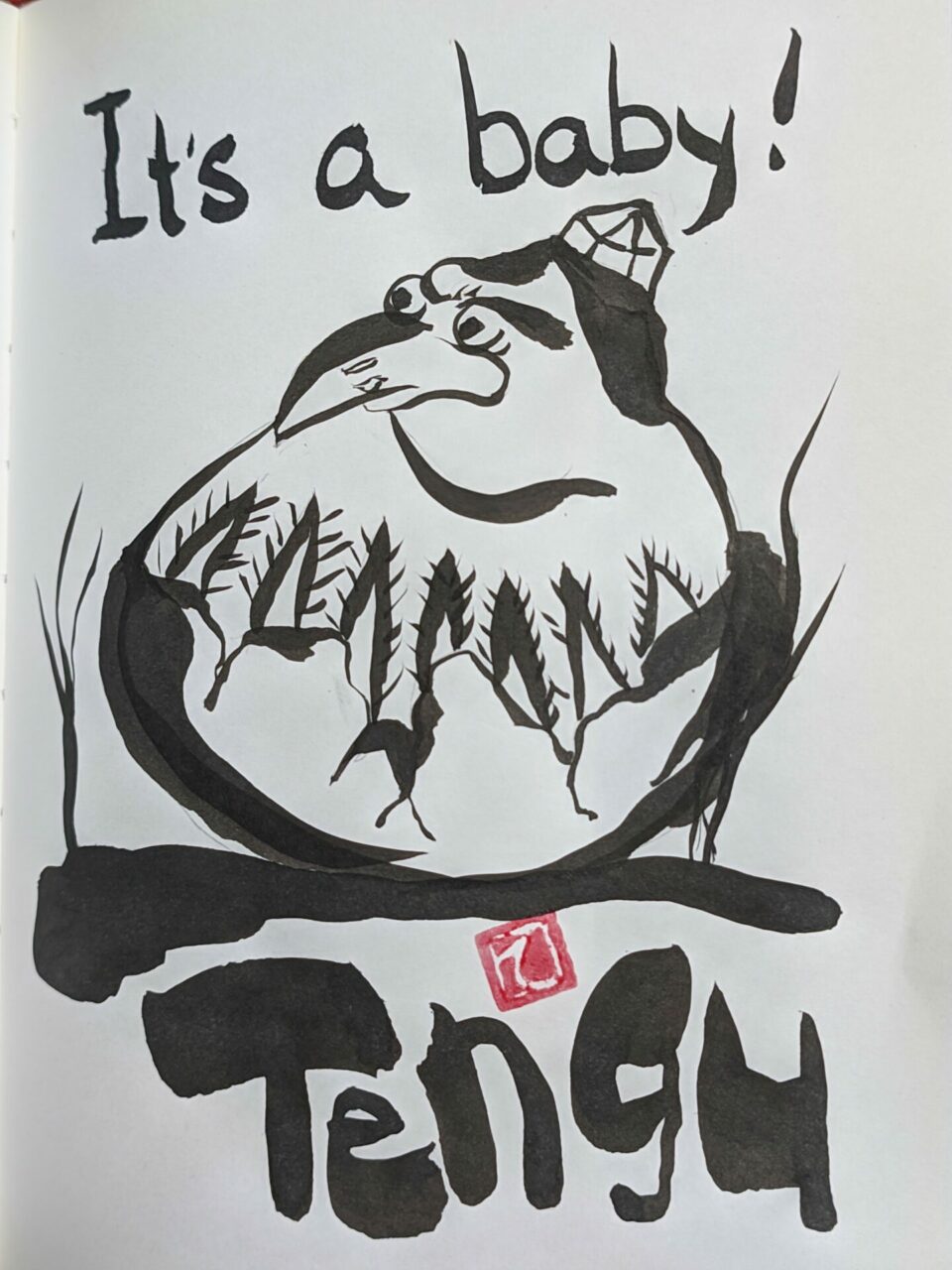
There are two types of tengu: the karasu/crow tengu and the hanadaka/long-nosed tengu. They’re both awesome martial artists and fearsome foes, among other things. On episode 32, I’ll introduce you to these two super cool Japanese yokai and tell you a little bit about their lore.
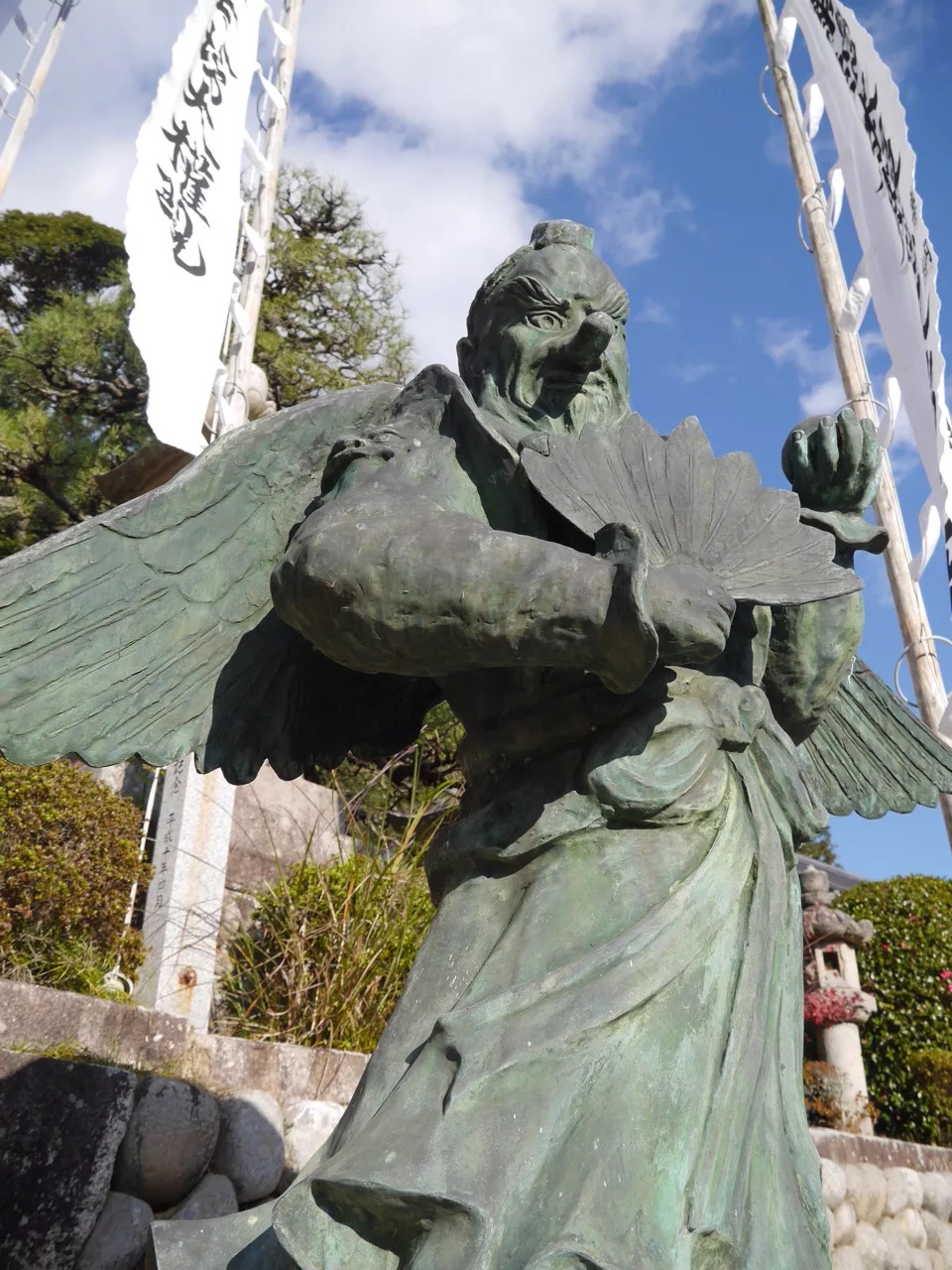
A Hanadaka (long-nosed) Tengu
Hey, hey, everyone, this is Terrie standing here in the drizzling spring rain. Okay, I’m not standing in the rain exactly, but it’s nearby and you can hear it. Isn’t it lovely? So lovely, in fact, I’m going to put up a little chunk of this binaurally-mic’d shower on my Patreon page for my patrons. I know some of them like to listen to the podcast background ambience sound, but I’m going to put up a little bit of this binaurally-mic’d shower on my Patreon page for my patrons. I love the sounds minus me talking when they study or work or just relax.
Okay, so the other day I realized something. I’ve been doing this podcast for over two years and I haven’t actually talked about a Japanese yokai yet. I’ve talked about slit mouthed women, fish with human faces, and a boy with no limbs or bones who grew up to become a god. But I’ve never actually broached a yokai subject.
I want to talk about that for two reasons. First, because yokai are awesome and they should be talked about more. And secondly, because in the next episode, I want to tell you about a very curious phenomenon that I’ve been fascinated with for years and years.
But before I can tell you about that, I need to tell you about this. So here we go.
The Tengu
Today, let’s learn about a creature called a tengu. We will start with the characters making up tengu. There are two of them and they literally mean heavenly or celestial dog. And they come from China, of course.
The story goes that long, long ago, a monk looked up into the sky and saw something black falling to the earth. Whatever it was, it made a thunderous sound like an enormous barking dog. And then there’s some stuff about an eclipse, some other stuff about a villager who sees a dog like creature standing on his neighbor’s house and also something about the harbinger of war.
The Chinese story is complicated and fascinating in and of itself. And while that’s all super cool and I would love to delve into that and talk about it, I want to instead address the tengu after they flew across the sea and Japan made them their own.
That said, tengu lore in Japan is also vast and complicated, fascinating and sometimes contradicting. There is no way I can cover everything, but let me try today to give you the gist of what a tengu is and then some interesting asides.
Types Of Tengu
So what can you expect when you’re hiking alone on a mountain trail and you run into one of these quite frightening majestic creatures? The first thing you need to know is that there are two different kinds of tengu. Before I get into how they’re different, let me tell you about how they’re alike.
The creature standing in front of you will be tall, probably most likely over six feet. He’s standing upright like a human and he’ll be wearing an outfit of a Yamabushi mountain ascetic. From top to bottom, he’s got a small black, box like lacquered cap called a tonkin tied to the top of his forehead. He’s wearing Yamabushi robes that are notable because they have six great big pom poms decorating them. Four in the front, two on the back. Those stand for the six virtues of Buddhism. On their feet, they’ll be wearing very high, single toothed geta, which makes this tall creature look absolutely ominous.
The tengu you meet may be holding a long walking stick, sometimes a sword or some other weapon like a naginata, which is a long pole with a blade at the end, or a fan made of feathers or leaves.Tall tengu also sport a great big pair of wings on their backs. Depending on the type of tengu, they’ll be white or black. So that’s where they’re similar.
Karasu (Crow) Tengu
Now, where they’re different. The first type of tengu is a bit smaller. It goes by several names, the most descriptive of which is the karasu or crow tengu. Called this because it has the face and the wings of a large crow. It’s also called the kotengu, small or lesser tengu, or even sometimes the ao tengu, blue tengu. This one is believed to be the original variety.
And from this creature, the second version came about. The crow tengu are tricksters, especially playing tricks on Buddhist monks. There are tales about them transforming to resemble the Buddha in order to fool unsuspecting monks, and even transforming into women to tempt those very same monks. Sometimes they’re described as the foot soldiers of the second tengu, the larger variety.
Great Tengu (Dai Tengu)
Now, the second tengu is the one you’ll probably see more in manga, anime, as an emoji, and just in general. It is larger, and it’s called the great tengu, in Japanese, dai tengu, or sometimes pronounced ou tengu. It has another name that gives you an idea of what it looks like, and that is the hanodaka tengu, or big nosed tengu.
Running into this fellow, you’ll look up to see a very crimson faced, scowling man, complete with long white mustache and beard, and of course, a very, very long nose. These tengu are taller, over six feet, and their wings are usually white instead of black. They’re also more dangerous than their counterparts.
Long-Nosed (Hanodaka) Tengu
I often find when I’m visiting a temple that has statues or masks of tengu, they’ll usually have one of each, a karasu tengu and a tengu with the red face and the long nose, the hanodaka tengu.
Tengu in general can shape shift, possess people, they’re wicked skillful swordsmen and martial artists. They can fly, teleport, communicate without moving their mouths, and when all else fails, they can control the wind by using that feathered fan to whip up outrageous storms.
Something I’ve always found fascinating about this creature though, is that they’re so well documented. They’ve been mentioned in quite a few old texts, just like it’s no big thing.
The Tengu Kyo Sutra
One of the most interesting to me is the Tengu Kyo, which is actually a Buddhist sutra recited by Shugendo monks about the tengu. In the sutra, the names of 48 tengu are chanted. While it is also stated that there are, all together, living in the mountains throughout Japan, 125,500 tengu, which brings me to where they live.
Mountains Famous for Tengu
Tengu are so associated with the forest and mountains that there are quite a few mountains in Japan that are famous because it is believed a certain tengu or a band of tengu dwell there. Here are a couple examples.
The tengu Tarobo lives on Atago Mountain in Kyoto. Jirobo of Hira Mountain is in Shiga Prefecture. Maekibo of Omine Mountain is in Fukuoka. And the very famous Soljobo of Kurama Mountain is also in Kyoto.
You’ll notice all the names end in bo. Bo is a suffix often used with Buddhist priests names, as shown by the sutra dedicated to them, as well as their habits, tengu and Buddhism are closely interconnected.
Now remember I mentioned martial arts earlier? Tengu are excellent swordsmen, and you can find loads of stories about how famous warriors were actually trained in the mountains by a tengu. Probably the most famous example is Minamoto no Yoshitsune, one of the most popular warriors and military commanders of the Minamoto clan during the late Heian and early Kamakura era.
He was such a strong swordsman that he defeated Benkei, who was a very famous warrior monk, and so earned his respect that Benkei became a follower of Minamoto no Yoshitsune. Everyone knows Musashi, right? Musashi’s nickname was actually Little Tengu.
If you’re a martial artist or a Japanophile, you might have heard of a book called The Demon’s Sermon on the Martial Arts by Issai Chozanshi. Issai Chozanshi was an 18th century samurai, and his book is a collection of parables told as a story of a swordsman having a conversation with a tengu that lives on Kurama Mountain. Was it Sojoubo? Maybe. Anyway, the English title is The Demon’s Sermon on Martial Arts, which is intriguing and all. But the Japanese title is Tengu-geijutsu-ron, not demon, but tengu.
OK, there’s a lot more to say, and there’s this interesting thing I still want to get into, but I’m going to do that on the next episode.
I’ll leave you with a phrase that you often hear in Japan. It’s tengu ni naru, or to become a tengu. Because the tengu is very confident, overly confident in their martial arts skills and other things, and because they love to show off to others just how awesome they are, if you tell someone or you call someone tengu ni naru, you’re actually calling them a show off.
OK, next episode, I’ll get into some more nitty gritty stuff and that really cool phenomena that I mentioned earlier. Thank you all for listening, with a special thanks to my patrons. I’m going to put the binaural mic shower up on the Patreon page today, so if you’d like, you can check that out. Talk to you soon. Bye bye.
Credits
Intro and outro music by Julyan Ray Matsuura

